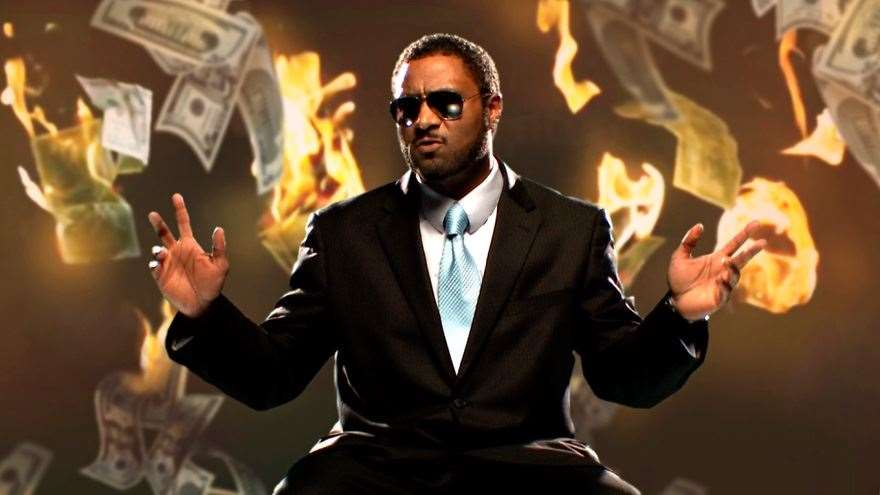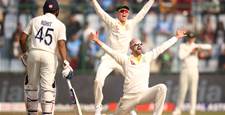They live off multi-million dollar contracts at the peak of their powers, so how do sporting superstars lose all their money?
They live off multi-million dollar contracts at the peak of their powers, so how do sporting superstars lose all their money?
 Big spender: former NFL footballer Andre Rison, who once had his house burned down by his pop-star girlfriend, had his own problems burning through cash. Image: Getty Images
Big spender: former NFL footballer Andre Rison, who once had his house burned down by his pop-star girlfriend, had his own problems burning through cash. Image: Getty ImagesMaking it as a highly-paid professional athlete is often compared to winning the lottery. In terms of chance, both are supremely improbable. But for those who do make it, the curious thing is how often they act like people who have, well, won lotto.
This space usually looks at how sports go about making money – this month, our interest is piqued by how sportsmen go about losing it. It’s the subject of Broke, part of the new set of ESPN’s great sports documentary series 30 for 30. The film, building on a Sports Illustrated story of a few years ago, details how multimillionaire athletes can turn the six or seven zeros on their contract into one lonely zero in their bank accounts.
To fans who would make less in their entire working lives than what these sportsmen make in a year, the frequency with which this happens is quite shocking. Broke starts from the premise that 78 percent of NFL players are either bankrupt or going through financial hardship within two years of retirement. For NBA players, it’s 60 percent within five years. (While the accuracy of the numbers has been disputed, there’s widespread agreement about the trend.) Worth noting: average annual pay in the NFL is around $2 million, according to sportingintelligence.com, while it’s close to $5 million in the NBA.
The overarching explanation for why athletes go bust is the sudden-wealth effect. Having spent a decade or more playing their game for nothing, the newly minted pro is immediately given a sum of money that few people in their early 20s could possibly hope to make. The unreality of this situation is profound – where most people learn to value their income by starting small and accumulating over time, the professional athlete’s earning curve is completely the opposite.
It’s a situation rife with financial naivety. There are common pitfalls for the million-dollar player on their way to bankruptcy. If there was a pro athlete version of Monopoly, these would make for terrific Chance or Community Chest cards:Your clothes/jewellery/car are laughed at in the locker room. Pay $50. The peer pressure to live up to the lifestyle is intense. Pro athletes compete in just about everything, which leads to obscene displays of conspicuous consumption. The film’s most colourful character, former NFL receiver Andre Rison, says without a hint of irony: “You see a team-mate and he’s got a big, whopping [gold] chain on, bigger than yours. So you say, ‘Okay, I’m going to buy the new 911 Porsche and
pull up to practice and see how he likes that.’”
You buy into an old school friend’s car wash business. Pay $500. As the film points out, athletes seem allergic to parking their money in a fund at eight-percent interest. Instead, they go in for all kind of private equity ventures: car washes, barber shops, restaurants, music labels and the tangible like, which have a high failure rate (many pro athletes end up with half their money tied up in such deals). Sports stars become a target for these schemes, often brought to them by people they know and trust. Which brings us to ...
Your family asks for money. Pay $100 for every house you own. Leeching off the major earner in a family is a cultural constant, but verges on the grotesque with athletes. Ex-NFLer Bernie Kosar estimates he was supporting 25 to 50 families at some point. “I remember seeing I had 60-something cell phones. I know I only used one.” Of course, athletes themselves are often the source of family issues, like boxing champ Evander Holyfield, who has 11 children with nine women.
You retire from the game, and you get divorced. Give away half your money. There’s some big numbers thrown about here – think recently of the Norman, Woods and Jordan settlements – but it’s tougher on the guys lower down the scale. One ex-footballer-turned-financial adviser said 60 percent of NFL players had a divorce within three years of retirement, a financial hit that arrived at a time when they’re still adjusting to money no longer flowing in.
The average viewer will get more than a little schadenfreude out of Broke, while LeBron James and his ilk took to Twitter in droves encouraging their peers to watch this cautionary tale. In the context of Australian sport, with a pair of billion-dollar footy codes and cricket plugged into the IPL, there’s a sense that we’re on the cusp of a big-money rush, with all the pressures sure to follow. One of the film’s final words is left to ex-NFL coach Herm Edwards, who says our collective thinking about pro sports is misguided: “It’s not a career, it’s an opportunity.” Rather like the lottery.
[tiny-carousel-slider id="2"]
Related Articles
.jpg&h=172&w=306&c=1&s=1)
Ian Baker-Finch to retire from broadcasting

Column: Cinderella Ko scripting her own epilogue













